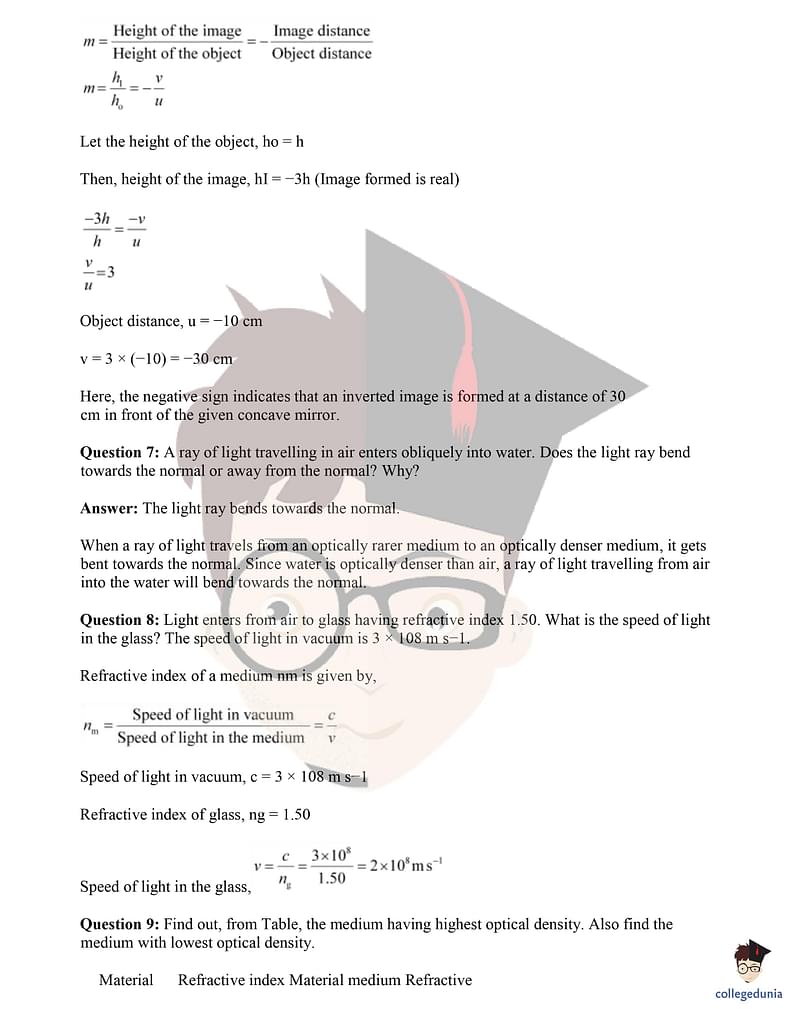NCERT Solutions for Class 10 Science Chapter 10 Light – Reflection and Refraction are provided in this article. It comprises all the important definitions, concepts, and methodologies that will be really beneficial for the students. The important topics that are included in this chapter are:
- Reflection of light by curved surfaces
- Images formed by spherical mirrors
- Refraction
- Refractive index
- Refraction of light by spherical lens
Expected no. of Questions: 2-3 questions of around 6 marks.
Download PDF: NCERT Solutions for Class 10 Science Chapter 10 Light – Reflection and Refraction
NCERT Solutions for Class 10 Science Chapter 10













Class 10 Science Chapter 10 Light – Reflection and Refraction: Important Topics
Laws of Reflection of Light
There are two laws of reflection of light, that are:
-
First Law of Reflection: According to this law, the reflected ray and the incidental ray all lie on the same plane.
-
Second Law of Reflection: This law states that the angle of reflection and the angle of the incident are always going to be equal.
Reflection of Light by Curved Surfaces
When the reflecting surface is instead curved, it is called a curved mirror. There are two types of curved mirrors; concave and convex mirrors. Concave mirrors are curved mirrors whose reflecting surfaces curve inwards while those whose reflecting surfaces bulge outwards are called convex mirrors. Curved mirrors generally form images when two rays intersect or appear to intersect.
Refractive Index
Refractive Index or Index of Refraction is a value calculated from the ratio of the speed of light in a vacuum to that in a second medium of greater density. The refractive index variable is most commonly represented by the letter n or n' in descriptive text and mathematical equations.






Comments